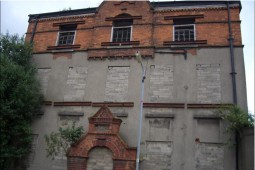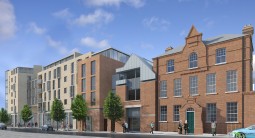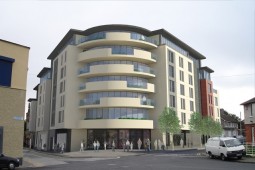New Development Will Accommodate 406 Students & Provide Elderly Housing
Dublin is one of Irelands’ most popular student cities – the world renowned Trinity College had 16,729 students registered for 2013/2014 and of these students, 12,420 were undergraduates and 4,309 were postgraduates, with 15,014 students studying full-time.
However, student accommodation is not easy to find and it can be trying, at the best of times, for students to find residence near the college they attend. Living space is now in soaring demand and while rent is on the increase there is a lack of affordable housing or developments that can accommodate students.
Dublin 8 is one of the oldest locations in the capital, home to the Guinness Brewery and just a stone’s throw away from Christ Church and St. Patrick’s Cathedral. So it is obviously attractive to students who are studying in colleges based in the city centre. In order to help alleviate this demand, the Creedon Group have received planning permission for the development of a block of student apartments, along with a nursing home in the Newmarket and Blackpitts area, or ‘Cathedral Corner’ as its locally known.
The development, approved on April 9th, will be constructed on an empty 2.5 acre plot, close to Warrenmount Convent and facing onto Mill Street, which was previously known as Tanner’s Alley. At a total cost of €41 million, the completed site will boast accommodation for over 400 students, a nursing home able to cater for up to 114 patients, along with offices, a restaurant and other facilities.
One of the most exciting aspects will see the Creedon Group undertake the complete renovation of no. 10 Mill Street, the sole remaining ‘Dutch Billy’ style building in the city centre. Also known as ‘Mill Street House’, work is currently underway to restore it to its original 1720 appearance.
Built in the 1720s by the Brabazon Family, the Earls of Meath, the house was purchased by the Christian Brothers who opened a school catering for 500 boys in 1818. This was only the second school in Dublin that the Brothers opened. In the 1850’s the building became the Mill Street Ragged School, founded by Daniel Molloy – Ragged Schools were charitable organisations dedicated to the free education of destitute children. The 1901 census lists a cabinet maker, John Gibson and his wife Lilla residing there, along with five elderly females who were unmarried or widowed – their occupations being recorded as ‘Widows House – No Business’.
Jean Carberry, a resident from the area lived in no. 10 from 1968 until 1971. On her Facebook page she wrote, “I lived in no. 10 from ‘68 till ’71. It was a fine house. Grand entrance. Fab staircases. The main room on first floor was like a church with a pulpit. There was a very big garden in the rear. And if you climbed the wall you were in the Blackpitts. Where the convent is. It had a beautiful front hall door which I have seen in many books about Dublin. Bang Bang lived across from us on the left facing up Newmarket.”
In the 1970s it was used as a storage facility by the Leyland and Birmingham Rubber Company, which manufactured golf balls, Wellington boots and other rubber products. The Department of Posts and Telegraphs bought the building in 1981 as part of a property adjoining a telex exchange. With no plans for the building it soon fell into disrepair and was vandalised several times. Amidst much protest the Department bricked up the windows and door of the house in 1983. Many felt this was a short-term solution to a long-term problem and the Liberties Association made repeated demands that the historic house should be restored into a community centre or museum.
The importance of no. 10 can be seen from a 2005 report composed by Shaffrey Architects entitled ‘St. Luke’s Conservation Plan’ for Dublin City Council. In it, Shaffrey described no. 10 as “perhaps the sole survivor in the area of the gable-fronted house type”, a statement reinforced in a city council report from 2009 which noted that it “appears to be the last extant double gabled Dutch Billy” in the city.
The same report continued, “no. 10 Mill Street is extremely important to the entire city both architecturally and historically and it is a failure on the part of the City’s PSR system and on the part of the public authority who owned the building for so many years that it has been allowed to deteriorate to such an extent.”
Nursing Home
I spoke to a representative from the Creedon Group who told me that they had received permission from An Bord Pleanala for this development earlier today, having commenced work on the restoration of no. 10 some weeks back. Their intention is that no. 10 will be a focus of the development being used for a restaurant and multi-purpose event space and situated between the student apartments and nursing home, with the latter eventually employing up to 200 full-time staff. The student complex itself will consist of 5 blocks with 96 units and there will be other facilities for students including a gymnasium, laundry facilities, social space and 193 bicycle spaces at various locations throughout the complex.
The group added that they intend to rent out the 96 units on an annual basis accommodating new students each year. Global Student Accommodation, a British based company established in 1991 and so far responsible for supplying accommodation to students in 40 different cities, will work closely with Creedon on the Cathedral Corner development.
The overall development will also neighbour the new Teeling Distillery. Due to open for business in the summer the distillery is already operating and making whiskey. The Teeling Distillery will also have a Visitor’s Centre and tours will be offered to whiskey lovers who want to observe the making of whiskey and experience the history behind the Teeling family.
The growing need for student accommodation like the proposed development has been echoed by Students Union President of Trinity College, Domhnall McGlacken-Byrne, who claimed in a report published on the housing search website, www.daft.ie that “the average rent across Ireland has increased from €825 to €915 over the last year – or close to 11%”. He adds that “the increase of rent is most acute in the capital, where prices have jumped by up to 17.2% in the last year alone”.
Students want to live near the city, as it makes getting to college easier, promotes social interaction and saves money on travelling. But many workers and people of all different walks of life are competing for the same living space and therefore it is important to create housing specifically with students in mind.
Accommodation for over 400 people on one site may seem high, but when you consider that this number is less than three percent of the total number of students attending Trinity College alone it gives some indication of how difficult it may remain for some to acquire nearby residence. However, this development is a step in the right direction and promises to be the perfect place for a student to live while away from home and eagerly read their books at night.










